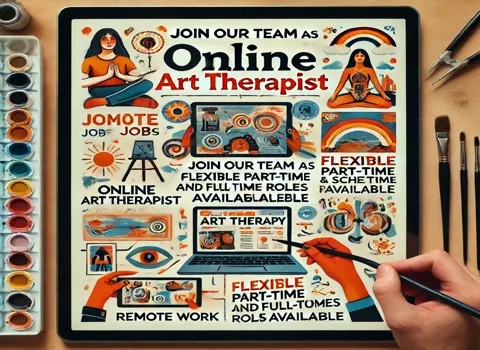Online Art Therapist
Description
Frequently Asked Questions (FAQs)
How does online art therapy differ from in-person sessions?
Online art therapy utilizes digital tools and telehealth platforms to facilitate creative expression and emotional healing. While traditional in-person sessions may involve physical materials like paint and clay, virtual sessions incorporate digital art programs, guided activities, and interactive discussions to achieve similar therapeutic benefits. The flexibility of online therapy also allows clients to participate from the comfort of their own space.
What are some of the common challenges faced by an online art therapist?
Online art therapists may encounter technical difficulties, such as internet connectivity issues or limitations in digital art tools. Additionally, establishing a strong therapeutic rapport without physical presence can require extra effort. Ensuring confidentiality, adapting techniques for different digital platforms, and maintaining engagement with clients of varying technological proficiency are also key challenges.
What industries or populations benefit most from online art therapy?
Online art therapy serves a wide range of populations, including individuals experiencing trauma, anxiety, depression, or developmental disorders. It is particularly beneficial for remote or underserved communities, military personnel, students, and professionals seeking flexible mental health support. Schools, hospitals, rehabilitation centers, and corporate wellness programs also integrate online art therapy into their mental health services.
How does an art therapist tailor sessions for different age groups and needs?
An art therapist customizes sessions based on the client's developmental stage, cognitive abilities, and emotional needs. For children, therapy may involve storytelling and playful artistic activities, while adults may engage in more reflective, structured exercises. Trauma survivors might use symbolic art-making, whereas neurodiverse clients could benefit from sensory-friendly approaches. The therapist continuously assesses progress and adjusts techniques accordingly.
What are the growth opportunities for an online art therapist in this role?
Online art therapists can expand their expertise by obtaining advanced certifications, specializing in trauma-informed care, or incorporating emerging technologies like virtual reality in therapy. They may also pursue leadership roles, research opportunities, or private practice development. Additionally, the increasing demand for remote mental health services presents opportunities for career advancement, including program development and interdisciplinary collaborations.




